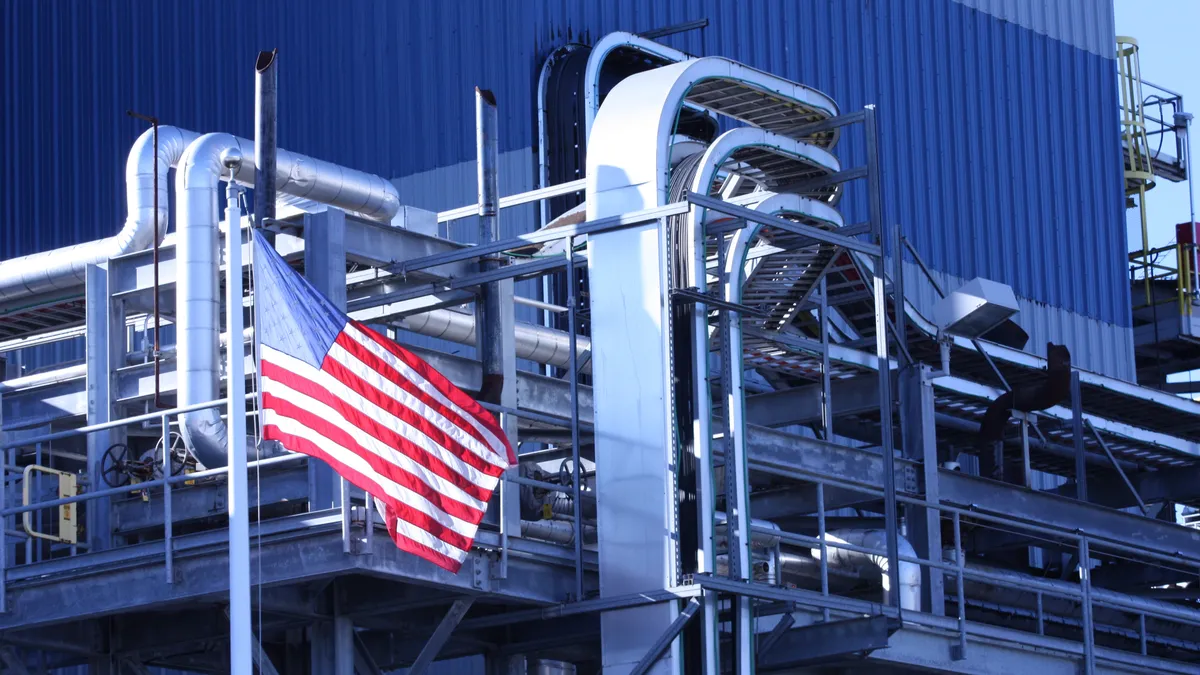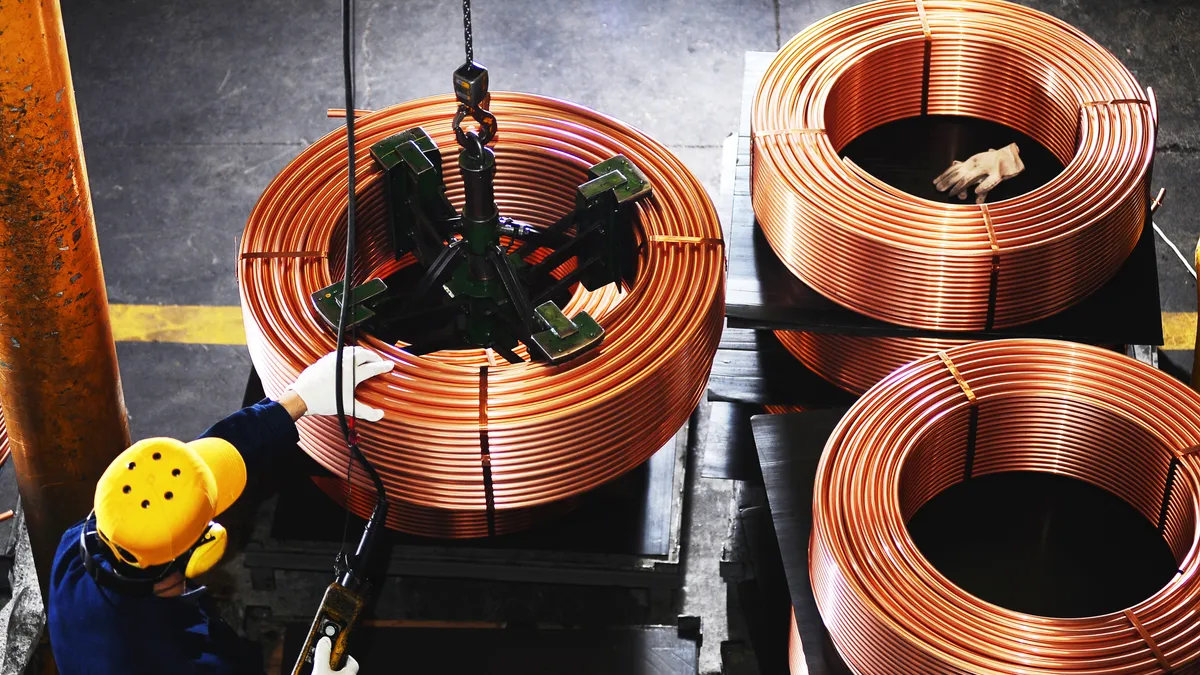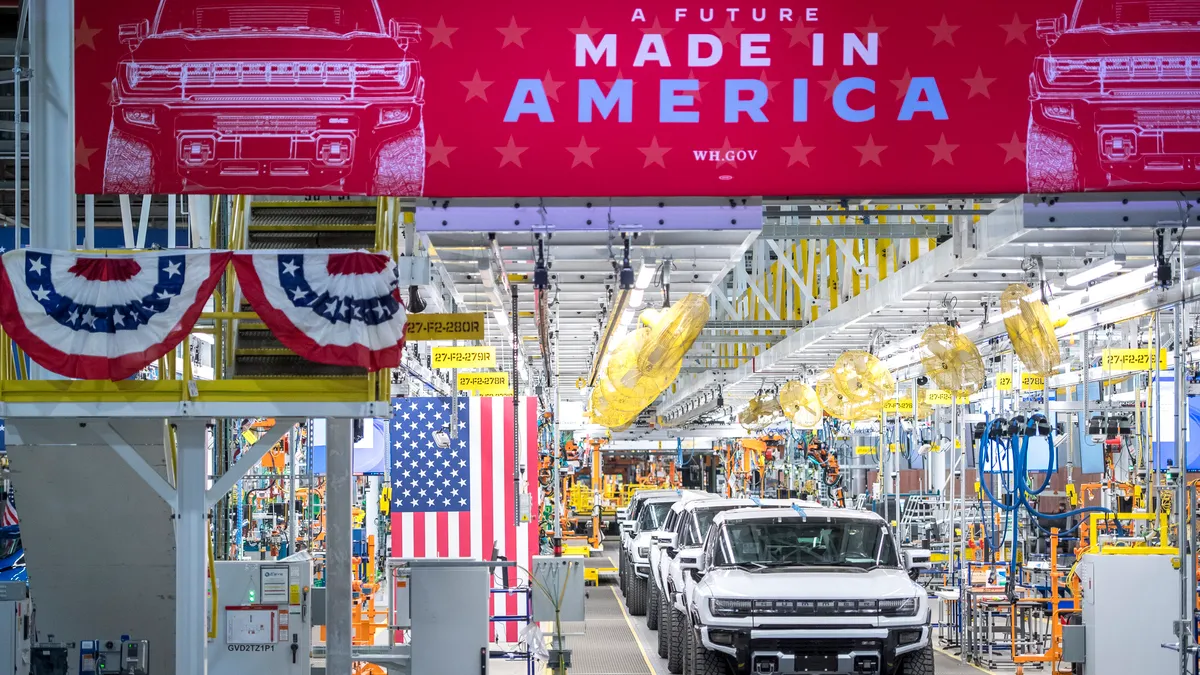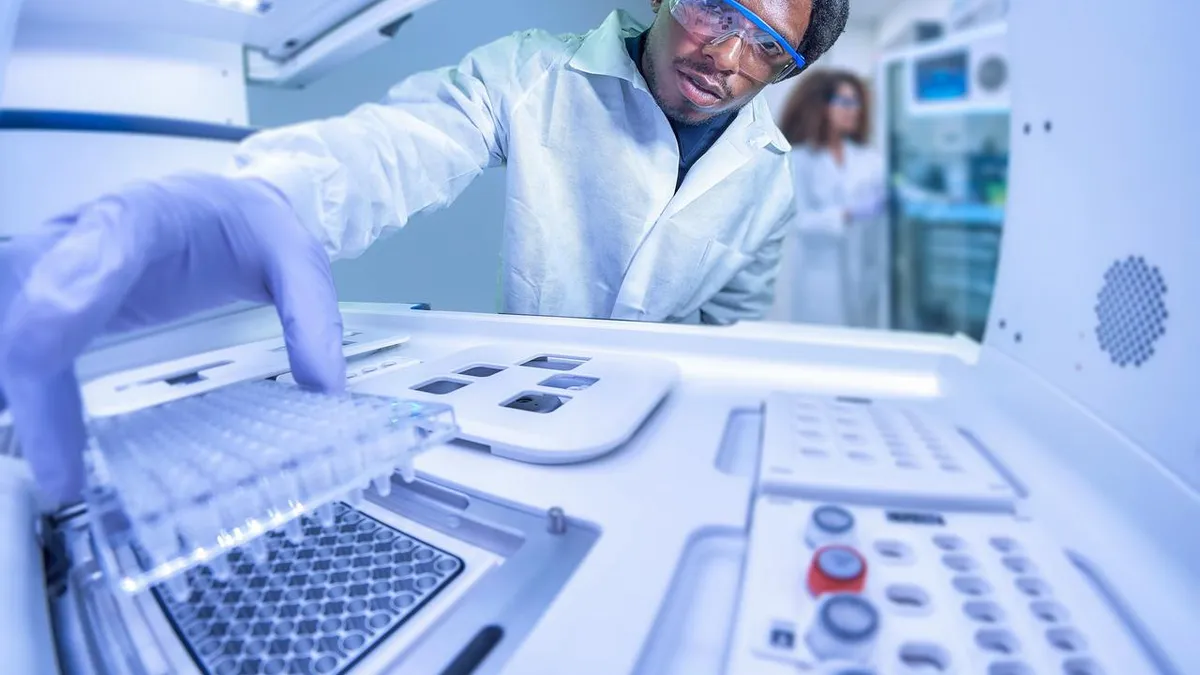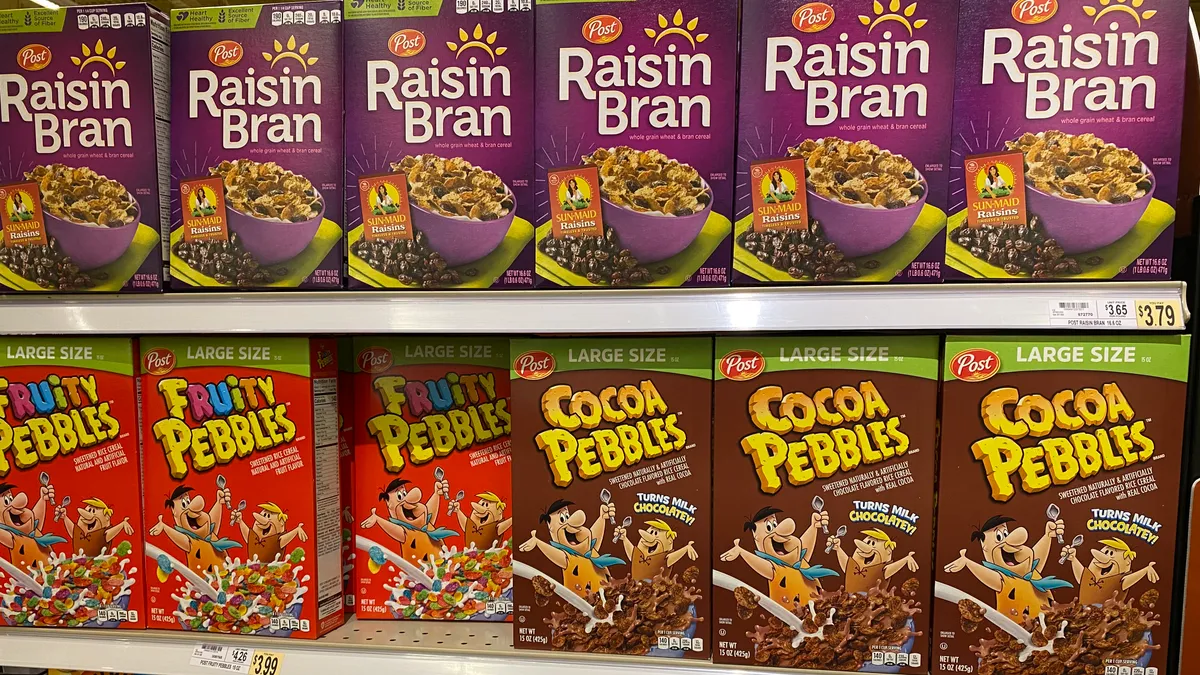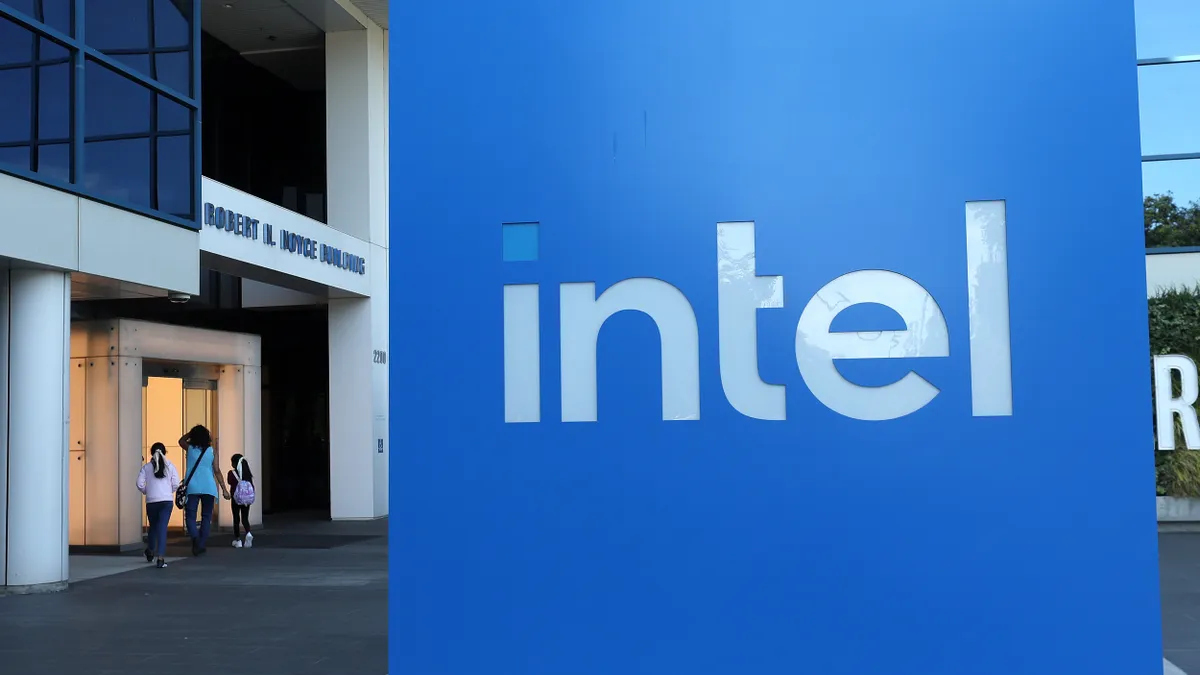Hershey is undertaking a multi-million-dollar supply chain and manufacturing project to enhance agility and efficiency throughout its operations.
In February, the confection and salty snack maker announced plans to spend up to $250 million through 2026 on its Advancing Agility and Automation Initiative to build “even greater agility and efficiency in how we operate,” Hershey CEO Michele Buck said during the Consumer Analyst Group of New York’s annual event.
The investment aims to digitize and automate Hershey’s processes, optimize procurement and manufacturing, and accelerate R&D and planning to boost visibility and streamline operations. Through the initiative, Hershey will be able to better integrate demand planning and bring more automation to the supply chain.
“These were things we had in the vision before, but now we’re much closer to being able to make them realized,” CFO Steve Voskuil said at the CAGNY event.
That reality is possible thanks to many steps Hershey took to integrate its business through unified technology, allowing visibility from supplier to retailer.
“It’s really integrating more technological firepower within the organization,” Erin Lash, director of consumer equity research at Morningstar, said of Hershey’s AAA initiative. “This is the next step in the journey.”
Technology key to unifying Hershey's many brands
Before AAA was announced, Hershey made a $1 billion investment in its supply chain network, including a new chocolate facility, additional production lines and upgrades to existing lines.
Hershey also embarked on an acquisition spree of salty snack brands, beginning in 2017 with its $1.6 billion acquisition of Amplify Snack Brands and continuing with purchases of Pirate Brands, Dot's Pretzels and Pretzels Inc. As those brands came under the Hershey umbrella, however, they “operated in more or less silos,” Lash said.
The lack of visibility prompted Hershey to unify its new business units under a single umbrella through an ERP integration using software provider SAP’s S/4 platform.
“S/4 was an important foundation,” Buck said at CAGNY. “It enables us the end-to-end connectivity to better identify where there’s redundancy and take that and complexity out of our system.”
With 95% of Hershey’s transactions globally operating under one system, the technology platform enabled Hershey to boost visibility throughout its supply chain, Voskuil said, revealing several benefits.
“We’ll have more inventory visibility,” the CFO said. “We’ll have more ability to connect the demand signals on one end with the supply chain reaction on the other end in an automated system.”
Technology is a pillar of Hershey’s current strategy, and the company appointed its first-ever chief technology officer in 2023. Deepak Bhatia came to Hershey after 12 years at Amazon, where his most recent role was VP of supply chain optimization technologies.
“He has deep technology skills, and importantly, he also understands running a supply chain business like ours,” Buck said.
Greater visibility unlocks efficiencies
Greater visibility across Hershey’s operations has resulted in several procurement and inventory management efficiencies.
Jim Salera, equity research analyst for packaged food and beverage and restaurants at Stephens, gave Reese’s as an example. On the demand side, Hershey needs to know how many Reese’s to produce, which informs how much peanut butter and cocoa to procure. Without visibility, Hershey might over- or under-order ingredients and supplies.
“To the extent that you can really align the demand from your retail partners and the procurement from your suppliers, it enables you to reduce the amount of food waste,” Salera said. Meanwhile, insufficient procurement could lead to shelf gaps or missed sales opportunities, he added.
Visibility and real-time data also allow plant managers to proactively maintain lines, advancing the initiative’s goal to optimize manufacturing. Data analytics could reveal the best times to clean equipment so it doesn’t interfere with a production run, or when to replace a part before it breaks and causes longer-term issues.
“In order to maintain that edge, you’re always going to need to be investing in the latest manufacturing innovation and resource planning software.”

Jim Salera
Equity research analyst for packaged food and beverage and restaurants at Stephens
Lash also said real-time data allows Hershey to be more flexible in its manufacturing. Smaller production runs and short changeover times for lines “can be particularly advantageous given the pace at which consumer trends are evolving,” she said.
Hershey could run small tests of new products, gather consumer feedback and then do a larger run with adjustments based on the feedback. That speeds the innovation cycle, meeting one of Hershey’s goals.
“Whether you're making chocolate bars or potato chips, the way that you extract efficiencies out of your plant is by limiting the downtime,” Salera said.
The AAA initiative is slated for completion in 2026. From there, Hershey expects to save $300 million annually, with 30% of the savings from supply chain productivity. This year alone, Hershey expects to save $100 million, with $10 million coming from supply chain savings and the remainder from SG&A.
Even with millions of savings, however, the snack and candy giant won’t rest on its laurels.
“In order to maintain that edge, you're always going to need to be investing in the latest manufacturing innovation and resource planning software,” Salera said.






